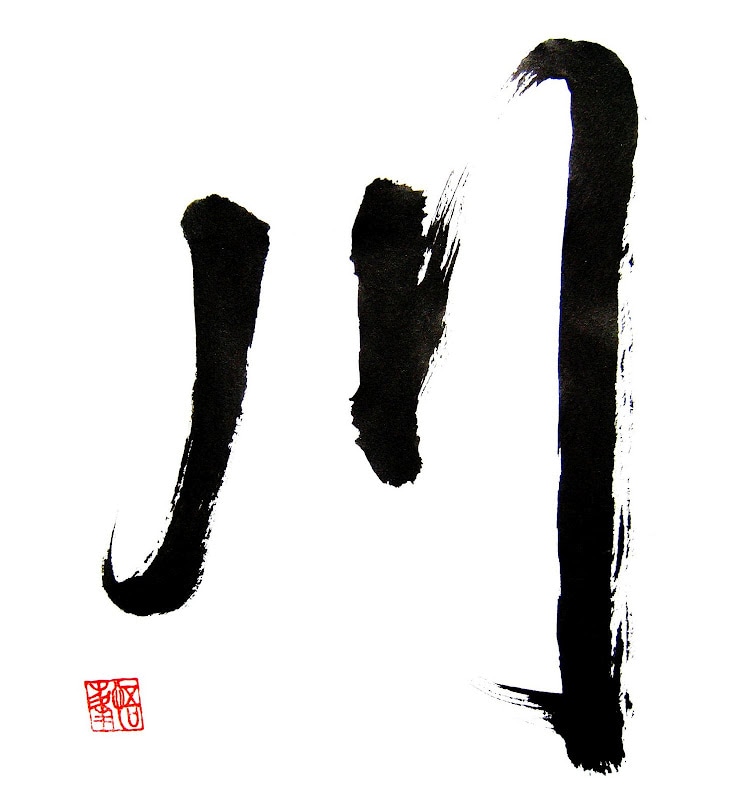|
Last night I had a dream I was trapped inside a castle besieged by peasants. They were carrying pitchforks and chanting, ‘Down with the King, down with the King!’. Since I live in a house with a kitchen sink view of a 500-year-old samurai castle, this was a completely plausible dream scenario. Only it wasn’t a dream. A rowdy mob really was below my window and it was chanting, ‘River clean! River clean!’ (Kawa-soji! Kawa-soji!). Across Japan whole communities are picking up their buckets, rakes, scythes, barrows and pitchforks, to clear their neighborhood rivers of debris and weed before the first rains of the wet season arrive in late June. With so much clamoring there was nothing for it but to leap from my futon, slip on my best threadbare rags, and join the march towards our mighty Semba River, the waterway which wends through the Good Hood, past the samurai castle, the bars, clubs and love hotels of FishTown before sidling under the bullet train tracks and emptying into the Seto Inland Sea. Under the direction of the Jichi-kai-cho (Hood boss) I took up my position at the floodgates. This is where the most interesting debris accumulates; not the usual flotsam like beer cans, baseballs, slippers and soccer balls—that’s for the downriver people. I mean the heavy junk. Junk with stories, like adult movie collections (owner got a girlfriend), air guns (owner’s girlfriend threw it out), electric fans (owner’s girlfriend demanded air-con) and bicycles (owner bought a motor-scooter to escape girlfriend). Regardless of who put it there, and in what state of sanity, sobriety or slovenliness they might have been at the time, all this stuff must be fished out before the wet season deluge arrives. River north, river south, all along the Semba’s banks, folk from our neighboring neighborhoods were hard at work, scything, dredging, shovelling, hauling weed and whatnot to big stinking riverside heaps. Wheelbarrows formed queues, manned by elderly women with big forearms and sensible shoes; a man sauntered by with a cigarette hanging off his lip, a pink bucket filled with brown muck in his hand and a twinkle in his eye that said 8am is never too early for a beer. He emptied his bucket and disappeared, leaving the two teetotallers to tend the muck heap. It’s not only the river that needs cleaning—the sluiceways also. These narrow drains which connect the rice paddies are important because they funnel away overflow after typhoons. They also provide easy escape routes for the garbage corner tomcats, ferrets and other pets-on-the-run, and in summer, hours of entertainment for kids who catch medaka (tiny fish) for their home aquariums and ‘science experiments’.. This year my job was to lean precariously over the deepest part of the river, where the rapid churns in a vertical motion, and use a garden rake to dislodge all the heavy crap that gets stuck. There were no airguns or adult movie collections this year, just a mountain of pongy-smelling weed which soaked me through and left me scented like river itself. Which is not to say that the our Semba is dirty. In fact, a sign of a healthy river is the presence of fireflies and this year there were many. Nights in the Good Hood were filled with the shouts and squeals of kids chasing them along the river bank from late May to mid-June. Which meant that there was a certain sadness in the river cleaning, because when you cut away the grass, you’re kicking out the fireflies. Smokin Joe Matsumoto, the old kitchen gardener who lives up my street, chimed in with his two yen on the matter. He said, ‘There used to be so many fireflies here, that when we swatted them with our hand fans it was like a shower of sparks.’ I wasn’t sure if this comment was meant to cheer me up or not. Nevertheless, the technical high school on the other side of the river has developed a Healthy River program which encourages students to breed fireflies in the school’s artesian well water system. Then, at the end of May, they are released at a nighttime open-invitation event for all the surrounding neighborhoods to enjoy. Unplugged, the Semba now runs freely. Like everything in the Good Hood, it doesn’t get done without teamwork. And though, at times, it sometimes seems futile (the river weed and junk will be back with the summer), community spirit is always stronger for it. We all now await, eyes skyward, the rainy season. http://www.mightytales.net/
0 Comments
Leave a Reply. |
This Blog:What is the essence of a traditional Japanese neighbourhood? Writing from my home in Himeji, a castle town in western Honshu, Seaweed Salad Days distills, ferments, presents! Archives
March 2024
Categories
All
|

 RSS Feed
RSS Feed
